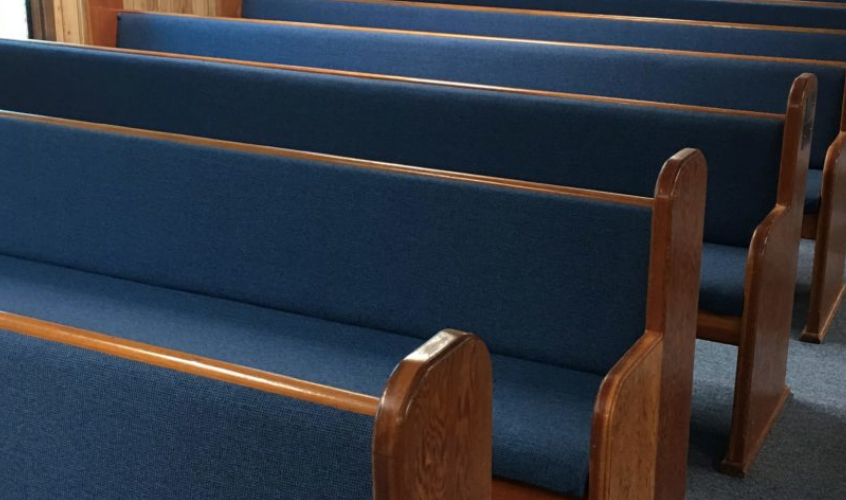Reporters who are truly interested in the future of the American faith-scene need to know this number — 100. Or maybe it’s 85 or 90. I’ve heard others say the crucial number is 115 in expensive zip codes.
But the late Lyle Schaller, a legendary church-management guru in oldline Protestant circles, once told me that it took about 100 actively contributors to fund the salary-and-benefits package for a credentialed minister in a mainline church. When Schaller said “mainline,” he was talking about the “Seven Sisters.” In descending order by size, that’s the United Methodist Church, the Evangelical Lutheran Church in America, the Presbyterian Church (U.S.A.), the Episcopal Church, the American Baptist Churches USA, the United Church of Christ and the Christian Church (Disciples of Christ).
In other words, if a church had more than 100 active members (or households) it could provide for its minister and then do other things — like keep the building from falling down. With fewer than 100 members, a church would be constantly struggling with basic expenses, trying to keep the doors open.
So that’s the statistic that looms over that glowing New York Times feature about a lively Presbyterian Church (U.S.A.) congregation on Manhattan’s Upper West Side that represents the future of the religious left. The dramatic main headline states: “The Church Where Believing in God Isn’t Strictly Necessary.”
Yes, I hear what many readers are thinking. This is a church that even the New York Times can love. And how many people are in these pews? Readers will have to read way down into the story to find that information. Meanwhile, the summary lede contains a few details:
Observant Presbyterians are always part of gatherings at Rutgers Presbyterian Church. But much of the time, so are Roman Catholics and Jews, as well as a smattering of people who consider themselves vaguely spiritual. Valerie Oltarsh-McCarthy, who sat among the congregation listening to a Sunday sermon on the perils of genetically modified vegetables, is, in fact, an atheist.
You have to love that detail about the “perils of genetically modified vegetables.” However, the thesis statement comes a few paragraphs later, as the editorial angels sing a song of hope for a future free of nasty stuff like ancient doctrines:
Typically, the connective tissue of any congregation is an embrace of a shared faith.
Yet Rutgers, a relatively small church on the Upper West Side of Manhattan, has rejected that. Sharing a belief in God — any God at all — isn’t necessary. Instead, the community there has been cobbled together by a different code of convictions, pulled in by social justice efforts, activism against climate change, meal programs for the homeless and a task force to help refugee families.
Houses of worship — including Christian churches from a range of denominations, as well as synagogues — have positioned themselves as potent forces on progressive issues, promoting activism on social justice causes and inviting in the L.G.B.T.Q. community.
The key, says the Rev. Andrew Stehlik, is that his church attracts “more thoughtful people” who are often rejected by others.
How many people are currently part of this congregation? The Times reports that the membership total is “just over 100.” People who study congregational life would immediately ask for two other numbers, including the one Schaller emphasized: How many members are active donors? What is the average Sunday morning attendance?
Here is another number I always request: What is the average attendance at the congregation’s mid-week or secondary service, if there is one? This number will usually tell a reporter the number of core members.
Readers: Please head over to this Times report (click here) and look at the photographs. What do you see? How are the photographs framed, in terms of showing the size of the congregation? Do you see lots of young “Nones” in the mix? Would it be relevant to note that the more conservative Redeemer Presbyterian Church averages about 5,000 in worship at it’s three main New York City locations and has started roughly 100 other mission projects in the greater New York area?
So why is the growth, or survival, of this tiny PCUSA flock so important for the Times?
It seems that the worshiping community could use an injection of people. Mainline Protestant denominations like Presbyterianism have seen their followings diminish in recent years. (Leaders of the Presbyterian Church put out a news release in April announcing that fewer followers were leaving, declaring that they were “encouraged by the slowing trend downward.”)
To address shrinking congregations, some pastors are searching for new ways to use their churches and redefine what fellowship means. Churches have the space and the good will, after all, to commit to community works, social justice or arts and educational projects. And opening their doors in this way can bring in those looking for more than a Bible study class. …
A large “Black Lives Matter” banner hangs from the front of the church, and nearby are colorful Tibetan prayer flags. Inside, there are buttons for worshipers to wear to declare their gender identity: he/him, she/her, they/them. And during services, worshipers recite alternatives to the Lord’s Prayer that use more inclusive language.
Oh, and some local residents have rallied to the church because of their shared worry and anger about — wait for it — Donald Trump.
So what is the bottom line here? To its credit, this Times report does let the members of this flock speak for themselves.
Let us attend:
Clare Hogenauer sees the appeal of the church’s progressive spirit. As a lawyer, she challenged the death penalty, and a few years ago she plopped down topless in a plaza in Times Square to support the painted performers whose bare bodies had stirred controversy. … But activism is not the reason she is a Rutgers regular.
Ms. Hogenauer, 71, has various ailments and relies on a rolling walker to navigate the neighborhood. She happened to come to the church several years ago simply because it was close to her apartment.
Ms. Hogenauer does not consider herself an observant Christian. “I believe he was a good guy,” she said of Jesus. But she found comfort in finding people who hugged her, asked about her health and joked with her.
“I’m more into the social aspect,” she said. “I care about a lot of the people, and they care about me.”
Read it all. This is actually a rather important story, in terms of the mainline church future.










